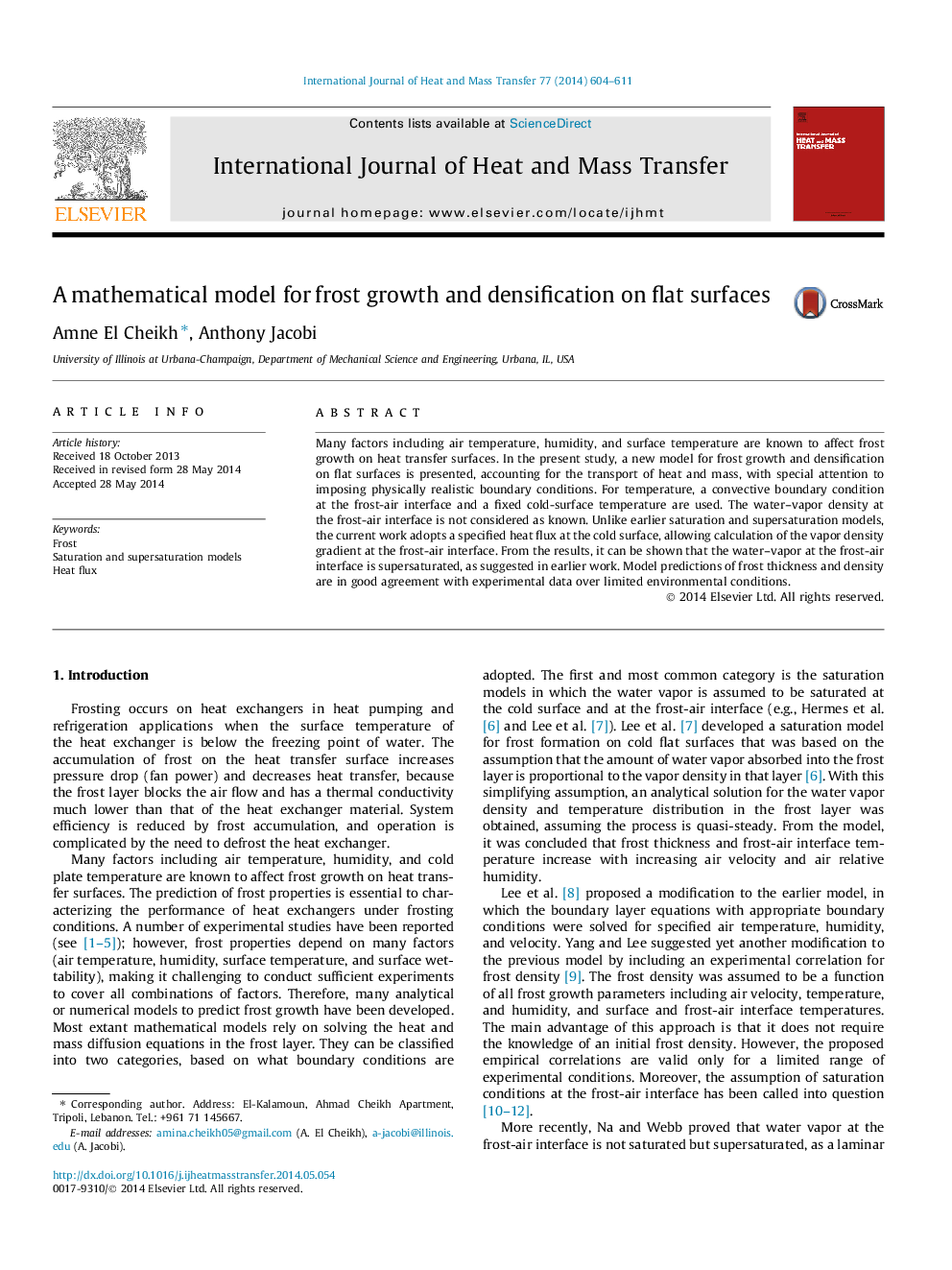| Article ID | Journal | Published Year | Pages | File Type |
|---|---|---|---|---|
| 657817 | International Journal of Heat and Mass Transfer | 2014 | 8 Pages |
Abstract
Many factors including air temperature, humidity, and surface temperature are known to affect frost growth on heat transfer surfaces. In the present study, a new model for frost growth and densification on flat surfaces is presented, accounting for the transport of heat and mass, with special attention to imposing physically realistic boundary conditions. For temperature, a convective boundary condition at the frost-air interface and a fixed cold-surface temperature are used. The water-vapor density at the frost-air interface is not considered as known. Unlike earlier saturation and supersaturation models, the current work adopts a specified heat flux at the cold surface, allowing calculation of the vapor density gradient at the frost-air interface. From the results, it can be shown that the water-vapor at the frost-air interface is supersaturated, as suggested in earlier work. Model predictions of frost thickness and density are in good agreement with experimental data over limited environmental conditions.
Related Topics
Physical Sciences and Engineering
Chemical Engineering
Fluid Flow and Transfer Processes
Authors
Amne El Cheikh, Anthony Jacobi,
